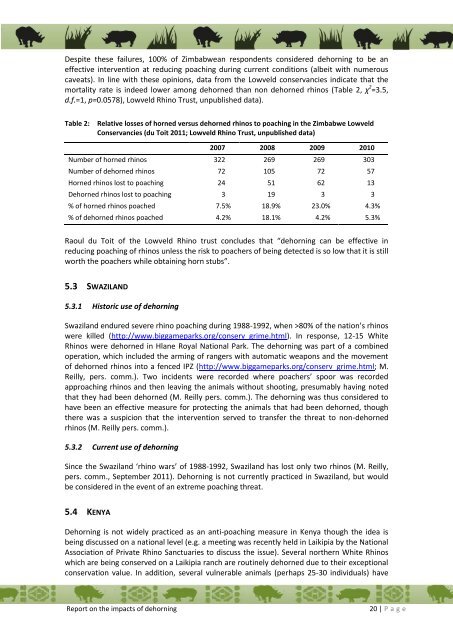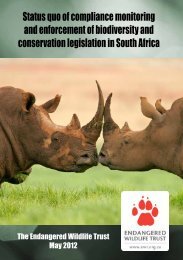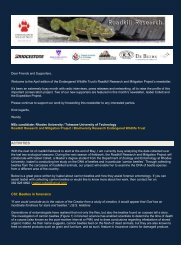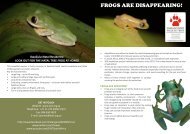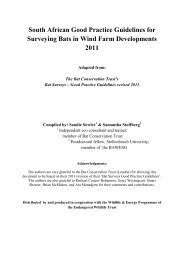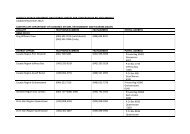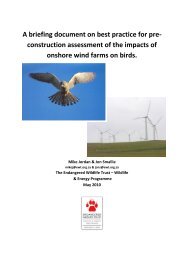click - Endangered Wildlife Trust
click - Endangered Wildlife Trust
click - Endangered Wildlife Trust
Create successful ePaper yourself
Turn your PDF publications into a flip-book with our unique Google optimized e-Paper software.
Despite these failures, 100% of Zimbabwean respondents considered dehorning to be aneffective intervention at reducing poaching during current conditions (albeit with numerouscaveats). In line with these opinions, data from the Lowveld conservancies indicate that themortality rate is indeed lower among dehorned than non dehorned rhinos (Table 2, χ 2 =3.5,d.f.=1, p=0.0578), Lowveld Rhino <strong>Trust</strong>, unpublished data).Table 2:Relative losses of horned versus dehorned rhinos to poaching in the Zimbabwe LowveldConservancies (du Toit 2011; Lowveld Rhino <strong>Trust</strong>, unpublished data)2007 2008 2009 2010Number of horned rhinos 322 269 269 303Number of dehorned rhinos 72 105 72 57Horned rhinos lost to poaching 24 51 62 13Dehorned rhinos lost to poaching 3 19 3 3% of horned rhinos poached 7.5% 18.9% 23.0% 4.3%% of dehorned rhinos poached 4.2% 18.1% 4.2% 5.3%Raoul du Toit of the Lowveld Rhino trust concludes that “dehorning can be effective inreducing poaching of rhinos unless the risk to poachers of being detected is so low that it is stillworth the poachers while obtaining horn stubs”.5.3 SWAZILAND5.3.1 Historic use of dehorningSwaziland endured severe rhino poaching during 1988-1992, when >80% of the nation’s rhinoswere killed (http://www.biggameparks.org/conserv_grime.html). In response, 12-15 WhiteRhinos were dehorned in Hlane Royal National Park. The dehorning was part of a combinedoperation, which included the arming of rangers with automatic weapons and the movementof dehorned rhinos into a fenced IPZ (http://www.biggameparks.org/conserv_grime.html; M.Reilly, pers. comm.). Two incidents were recorded where poachers’ spoor was recordedapproaching rhinos and then leaving the animals without shooting, presumably having notedthat they had been dehorned (M. Reilly pers. comm.). The dehorning was thus considered tohave been an effective measure for protecting the animals that had been dehorned, thoughthere was a suspicion that the intervention served to transfer the threat to non-dehornedrhinos (M. Reilly pers. comm.).5.3.2 Current use of dehorningSince the Swaziland ‘rhino wars’ of 1988-1992, Swaziland has lost only two rhinos (M. Reilly,pers. comm., September 2011). Dehorning is not currently practiced in Swaziland, but wouldbe considered in the event of an extreme poaching threat.5.4 KENYADehorning is not widely practiced as an anti-poaching measure in Kenya though the idea isbeing discussed on a national level (e.g. a meeting was recently held in Laikipia by the NationalAssociation of Private Rhino Sanctuaries to discuss the issue). Several northern White Rhinoswhich are being conserved on a Laikipia ranch are routinely dehorned due to their exceptionalconservation value. In addition, several vulnerable animals (perhaps 25-30 individuals) haveReport on the impacts of dehorning20 | P a g e


